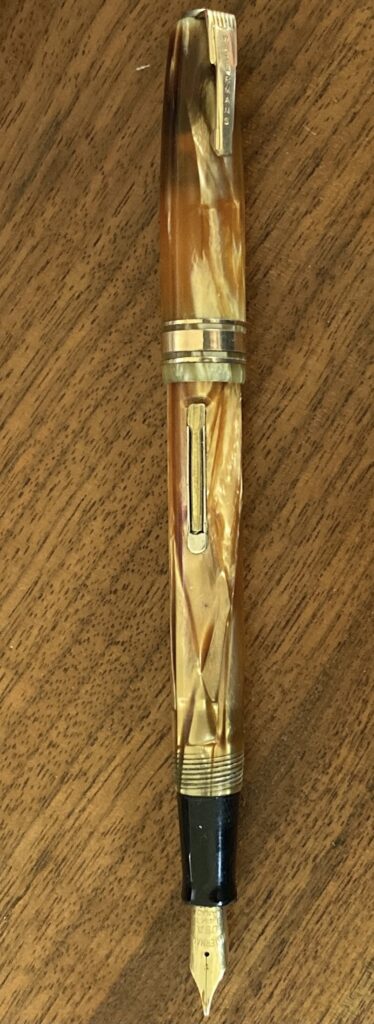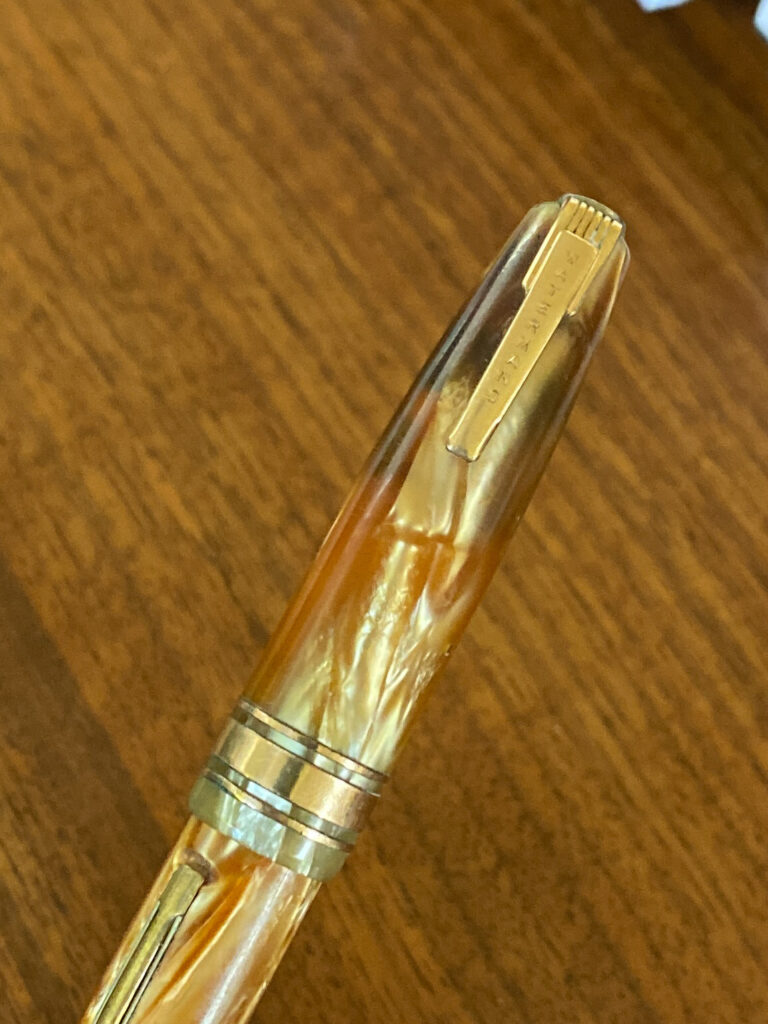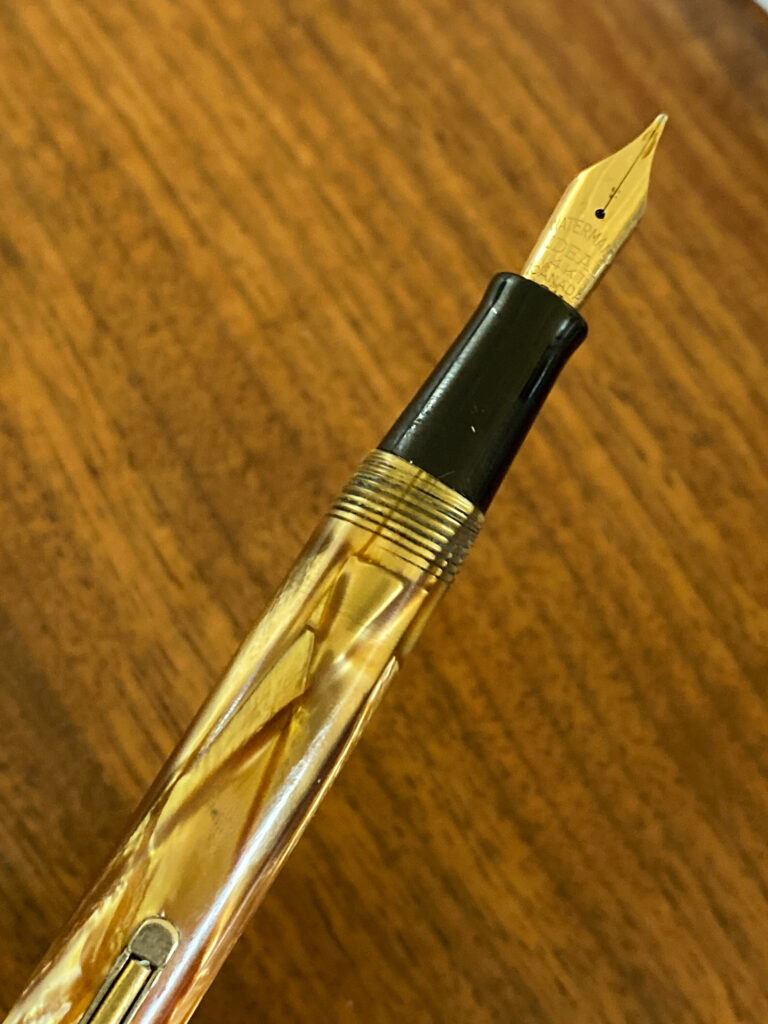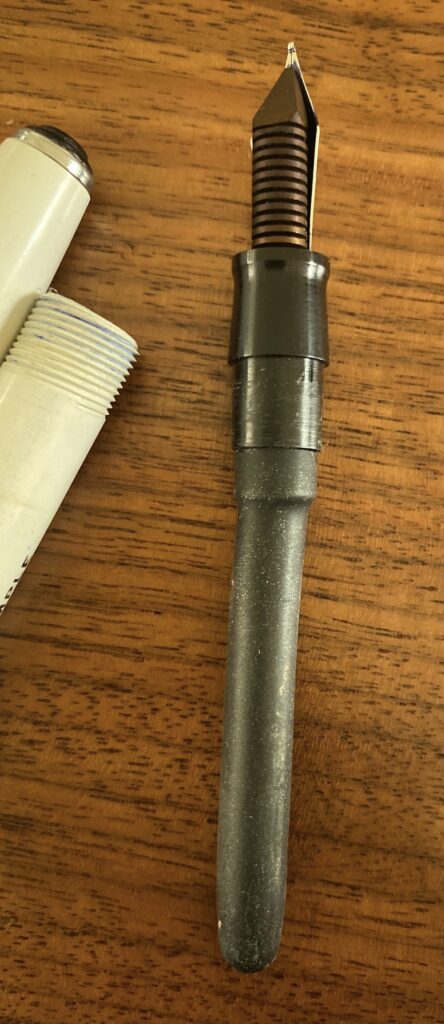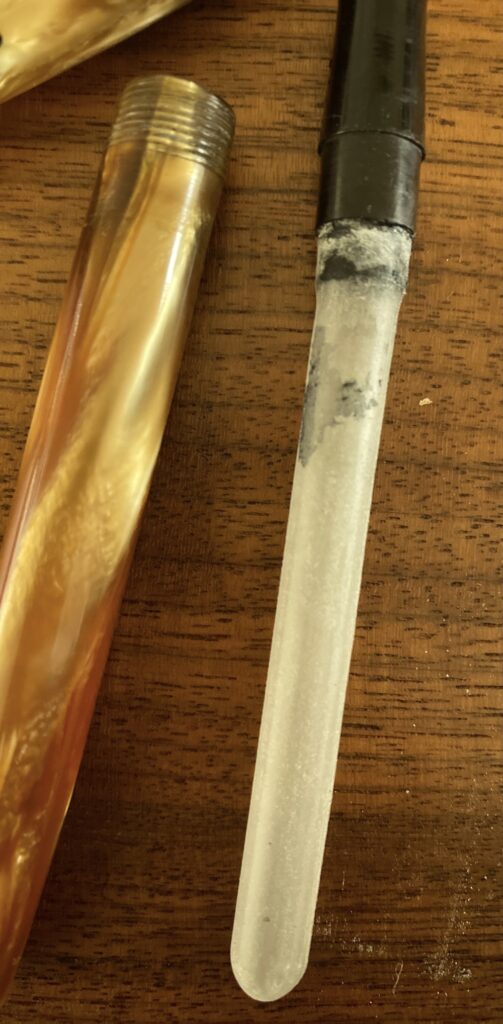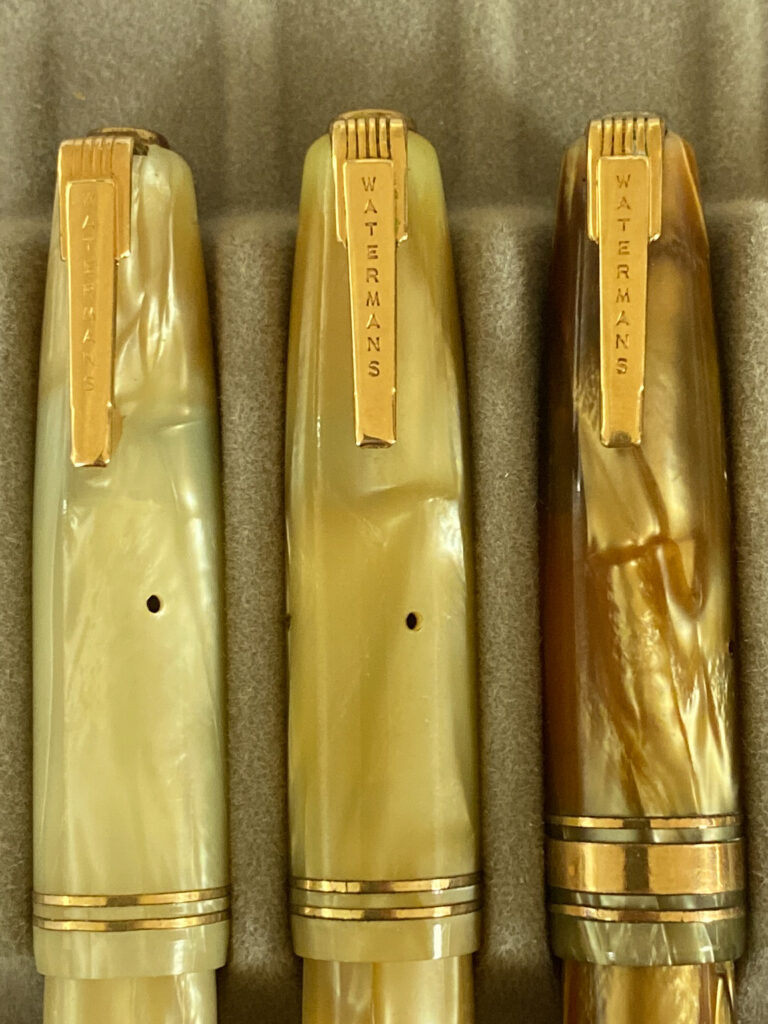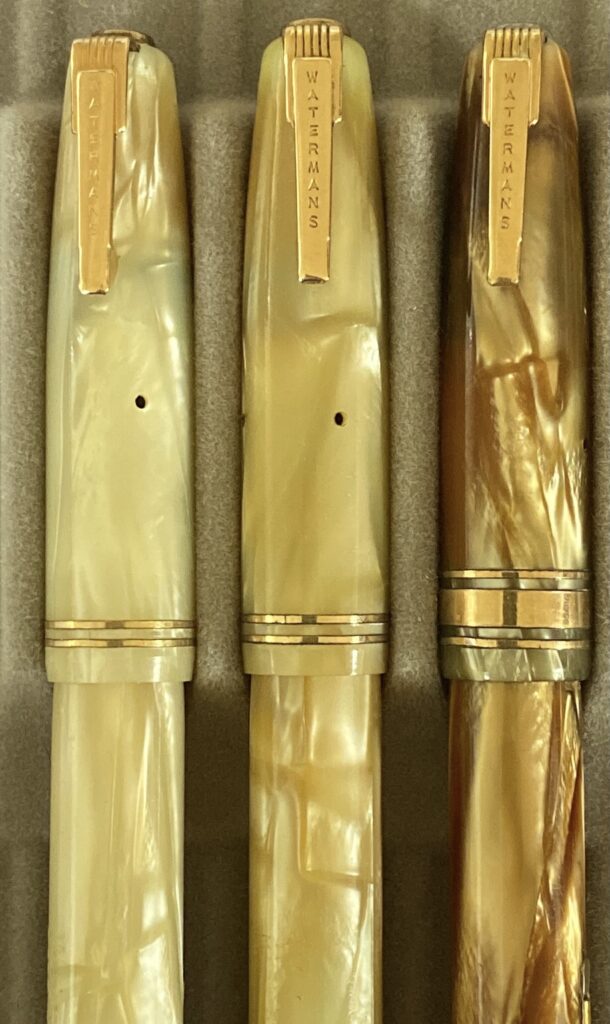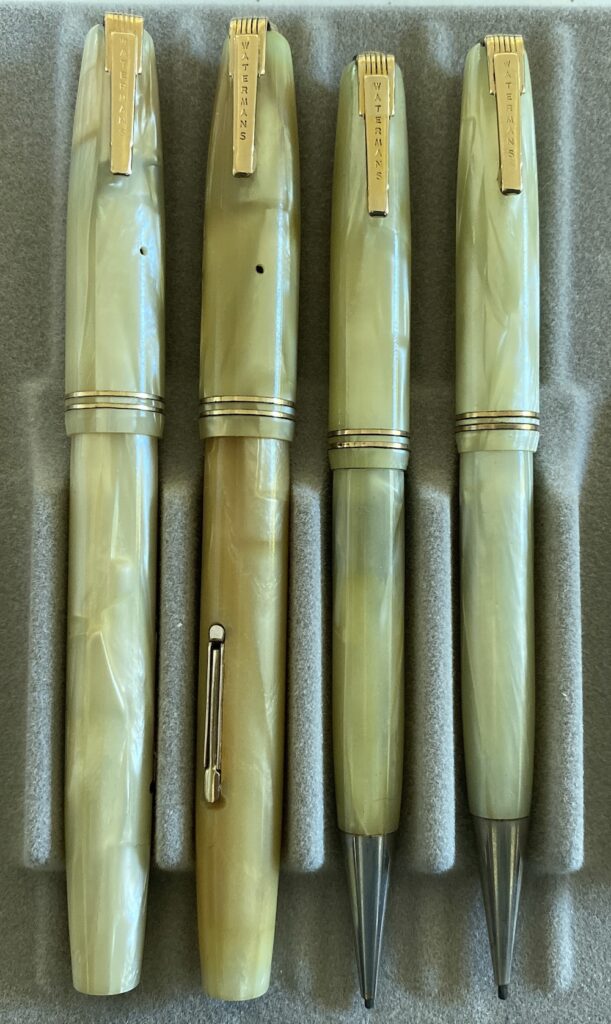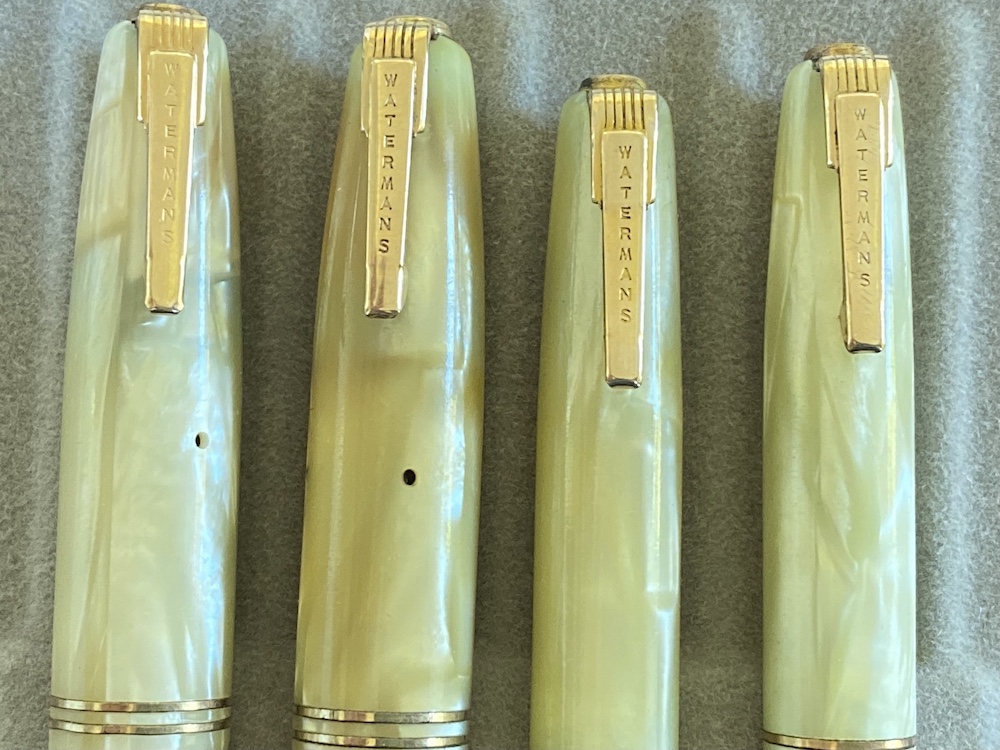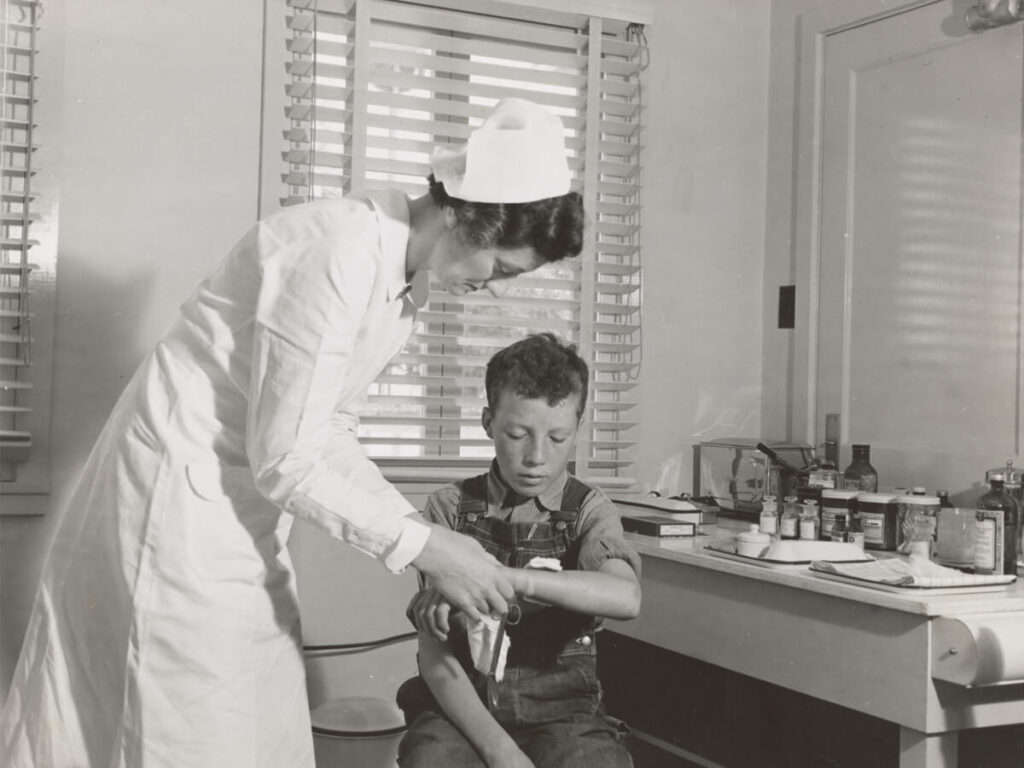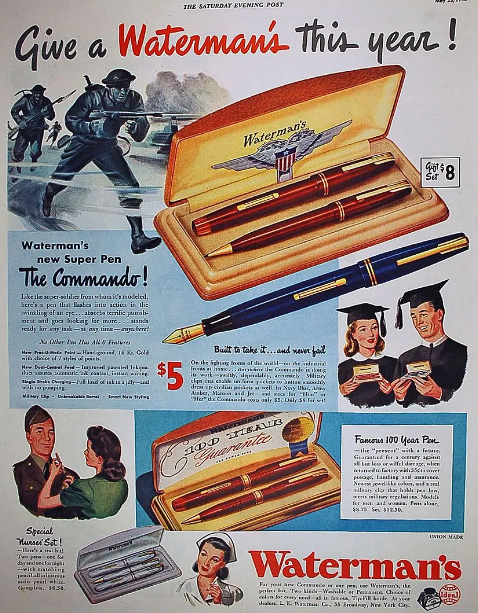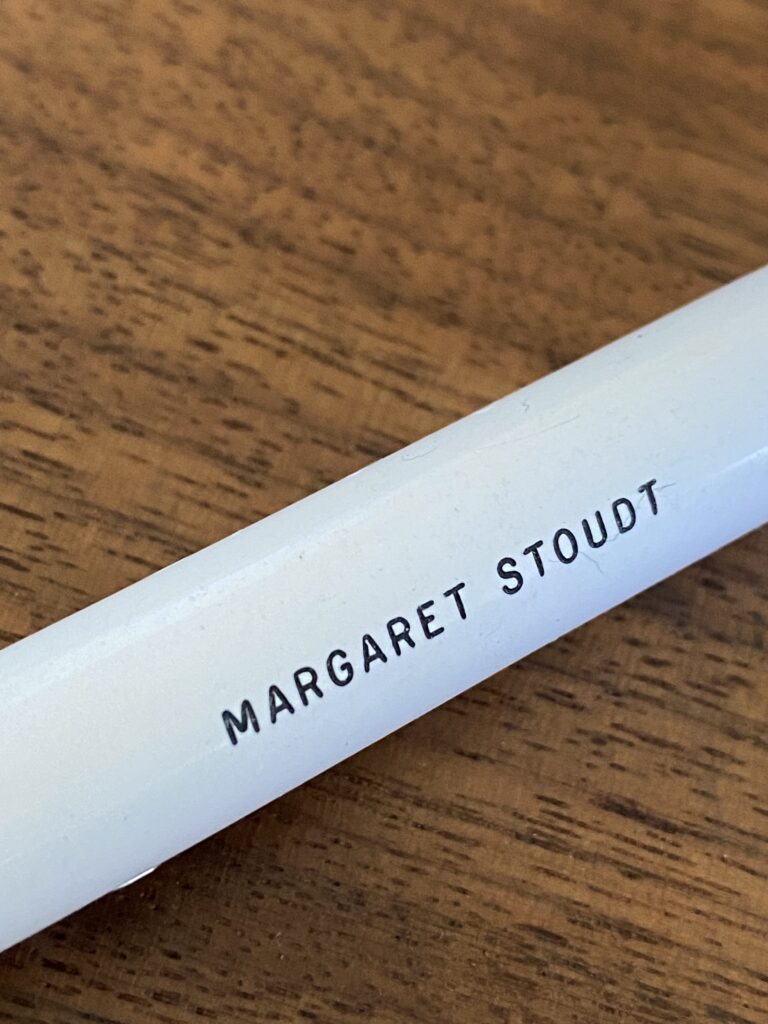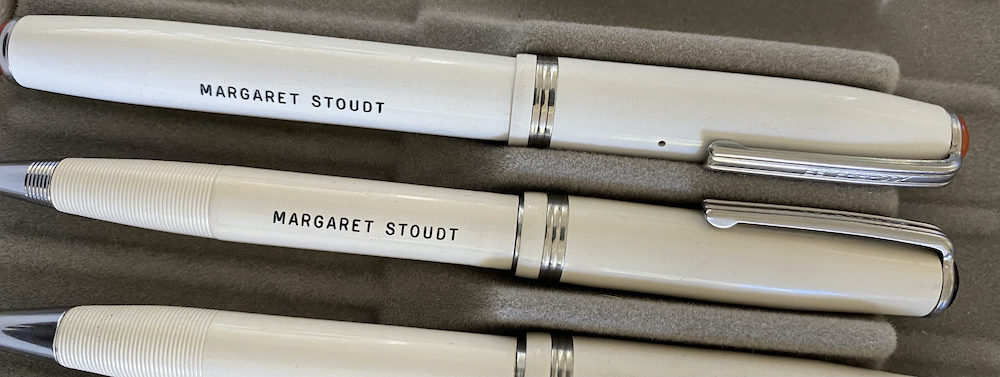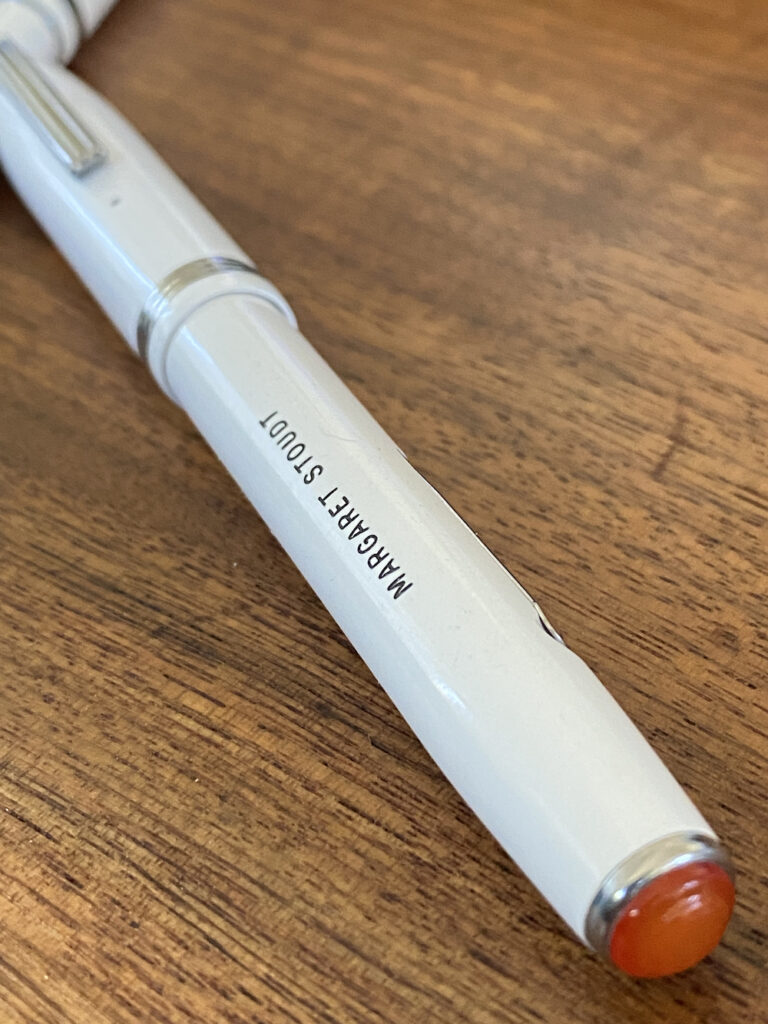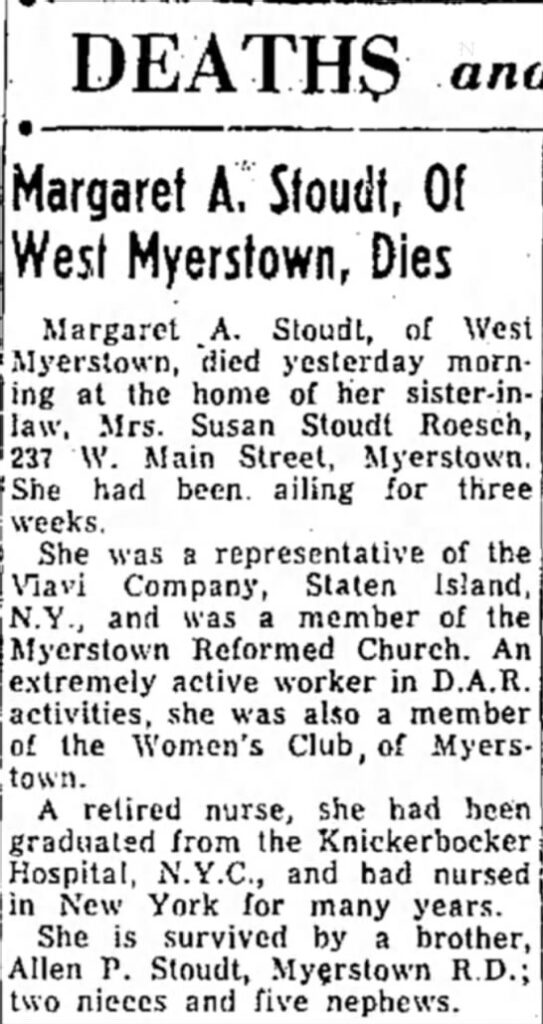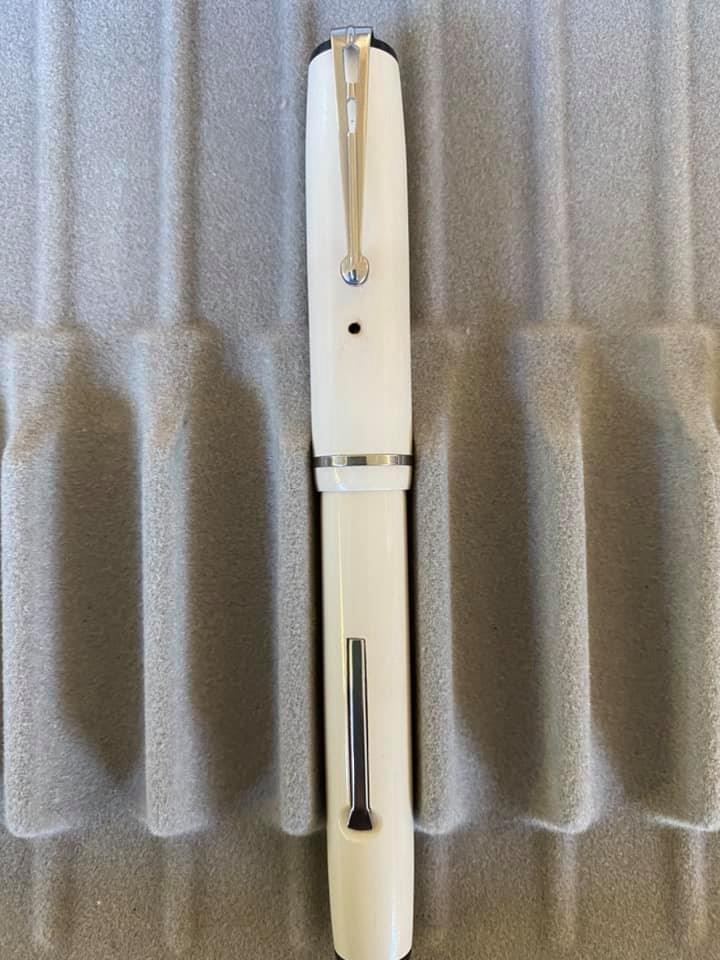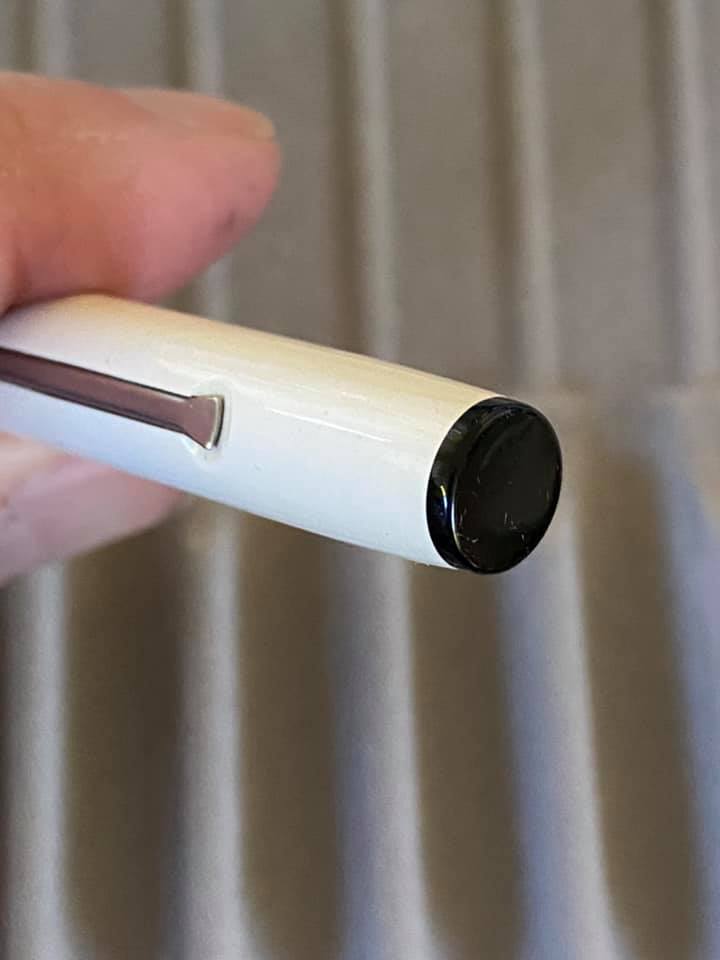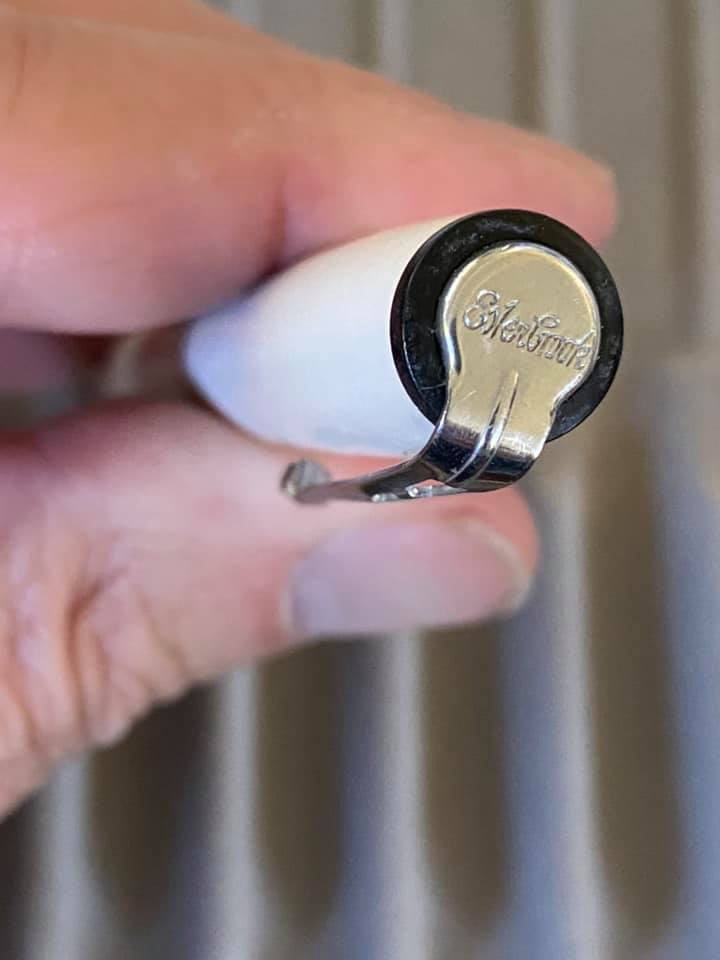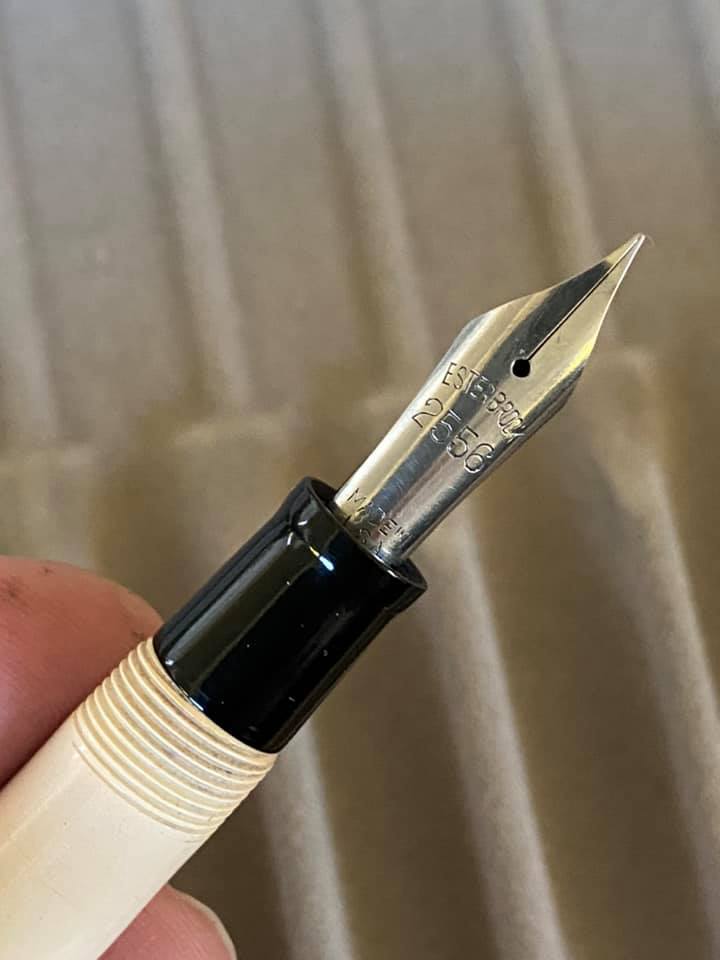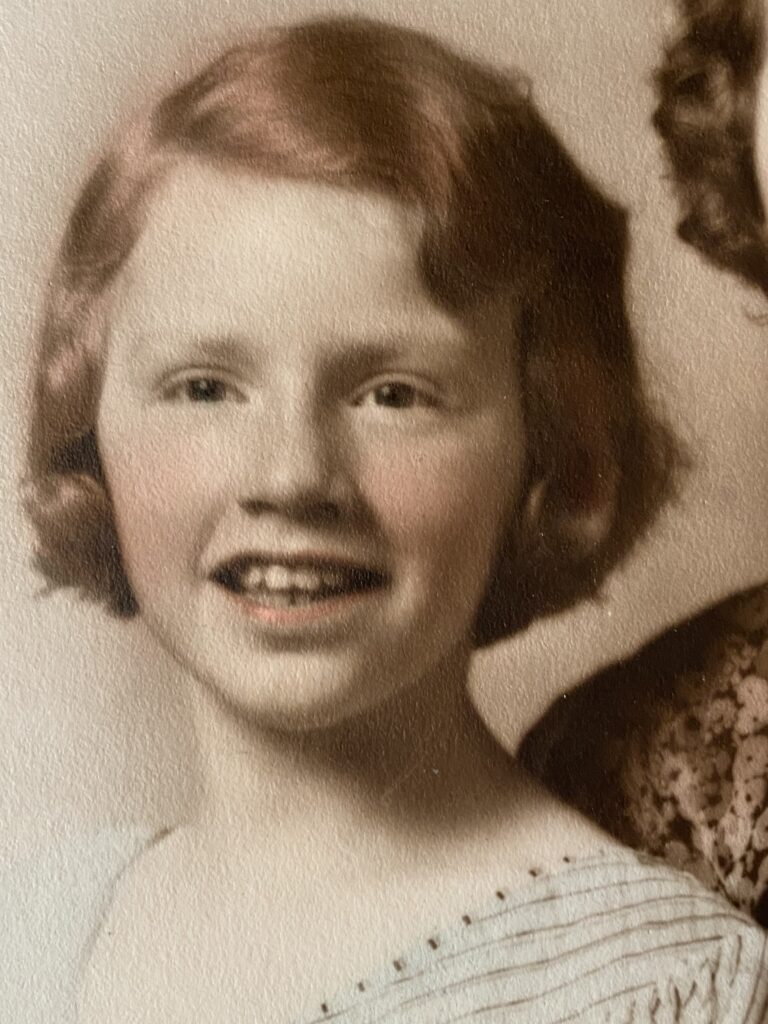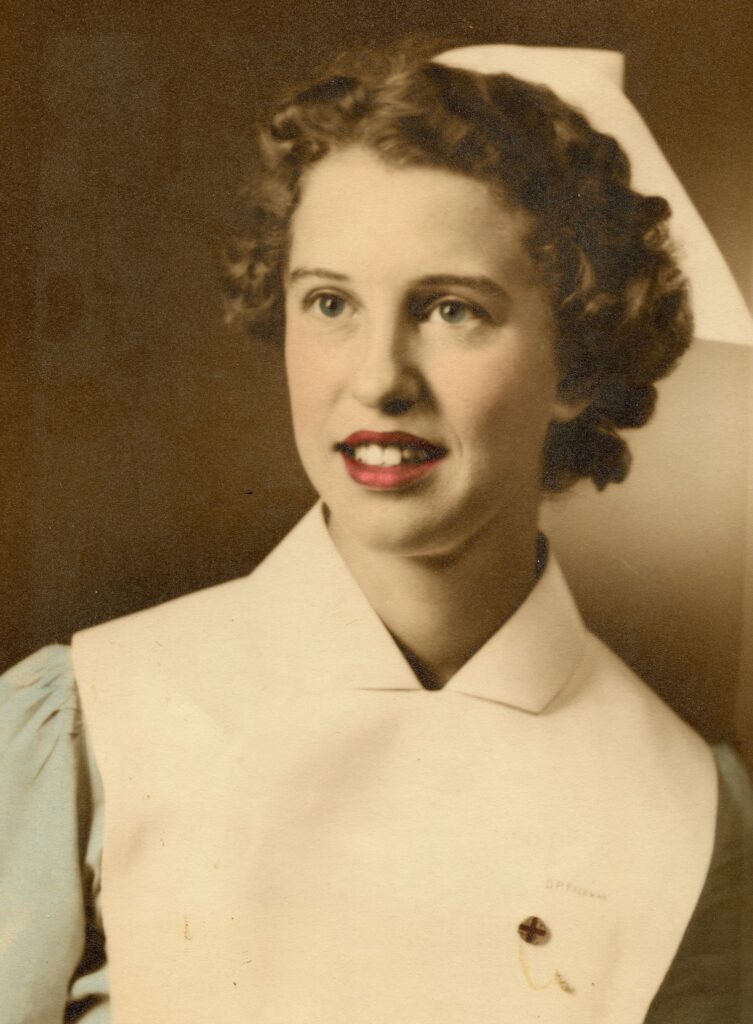
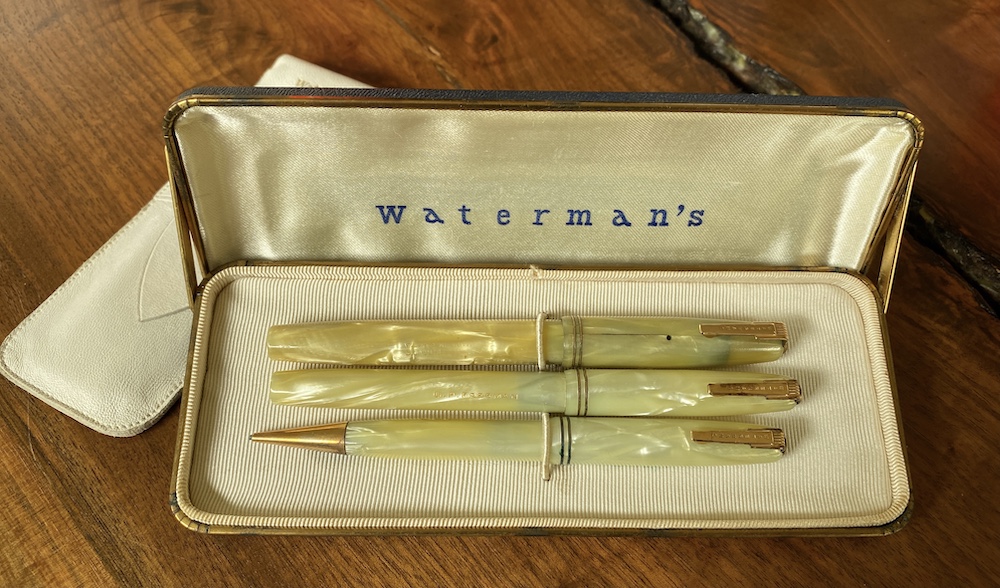
Daisy Patricia Freeman graduated from Thomas Memorial Hospital in St Thomas Ontario in 1953. As a graduation gift, she received a Waterman’s Nurse’s Pen Set, with her name monogrammed on it, and her graduation class information also monogrammed in gold leaf on the leather pouch.
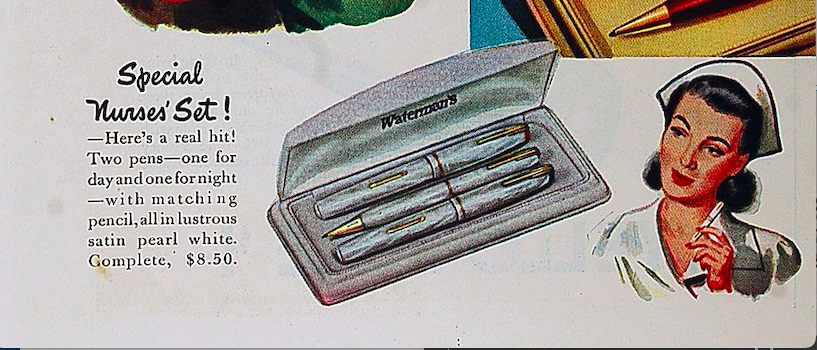
The thermometer case is also interesting: it has a red tip so that it would be easy to distinguish from the pen and pencil when in the pocket.
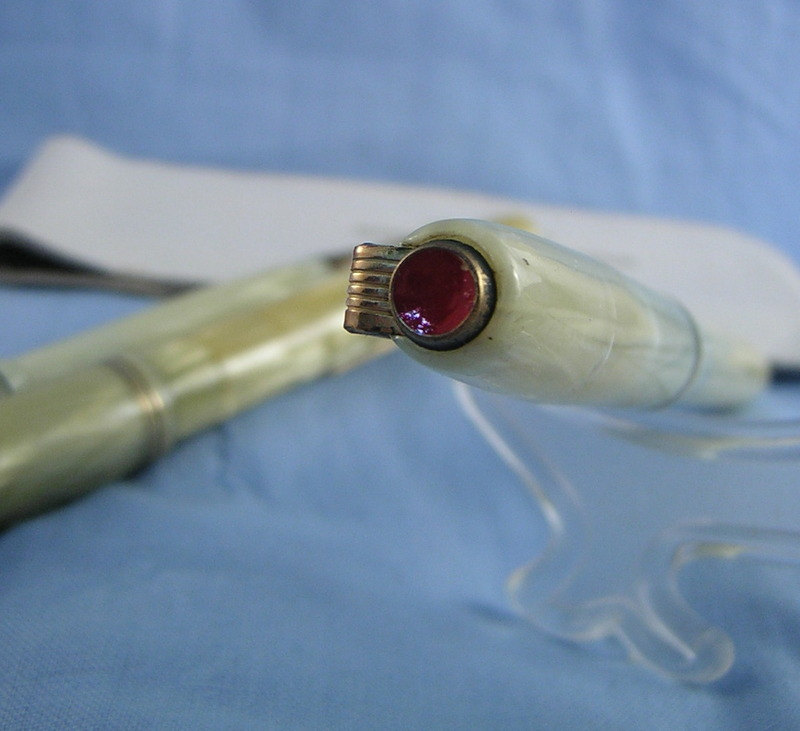
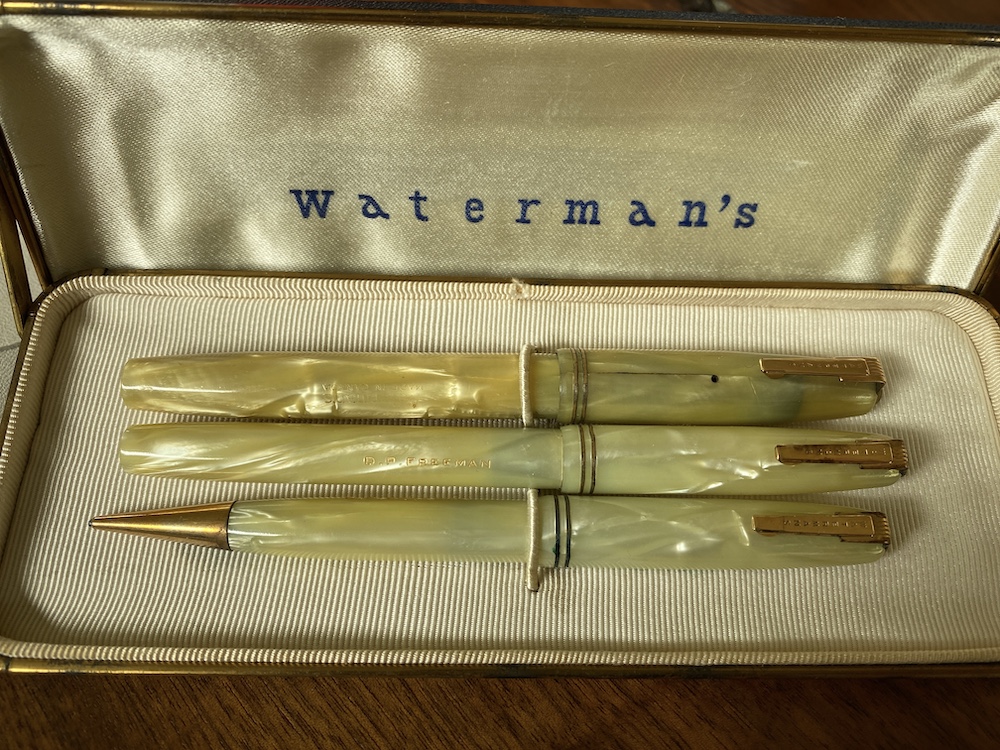
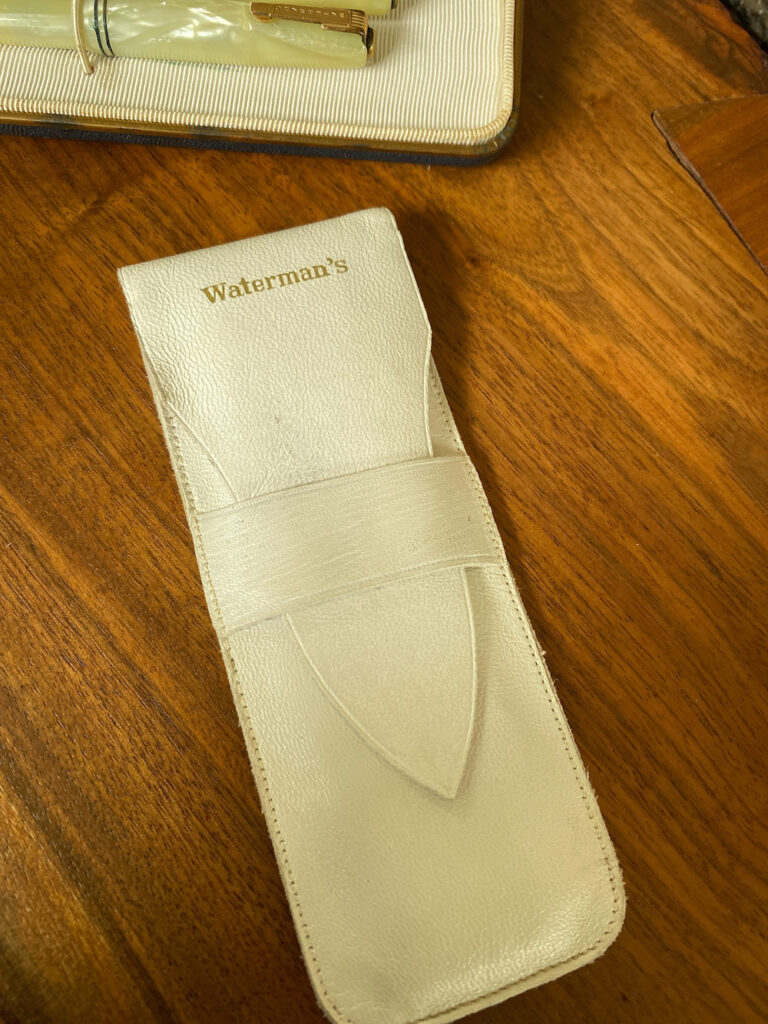
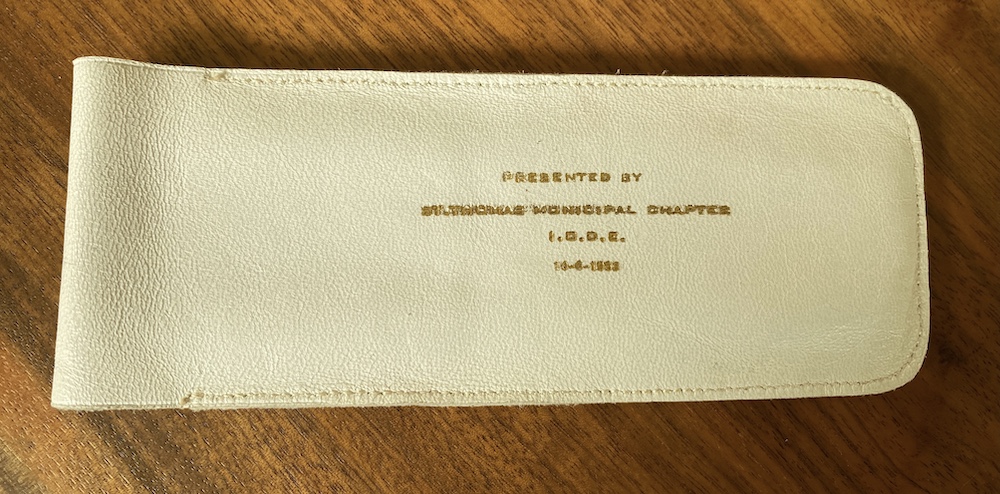
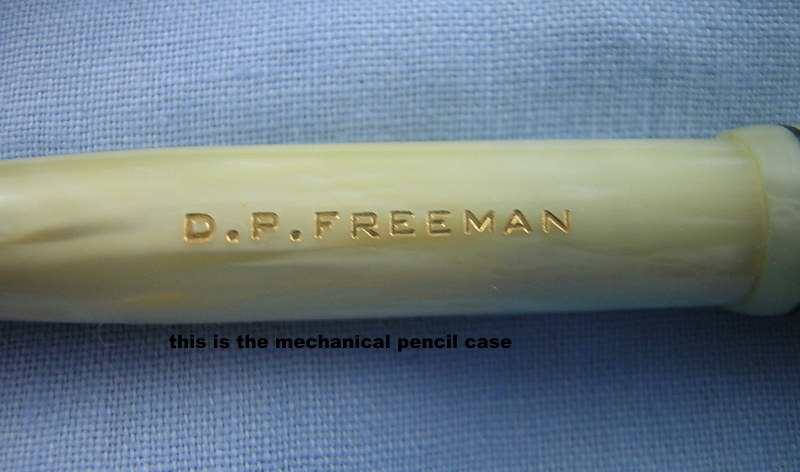
68 years later, I came across this set on Etsy, and was thrilled to add it to my collection. I was also lucky enough to be able to contact Nurse Daisy’s family and learn a bit about her service as a nurse.
Daisy Patricia Freeman graduated in 1953 and did general nursing at the local St. Thomas General Hospital. After working as a nurse, she eventually took time off from regular duty to raise her family. Upon returning to the profession, Ms. Freeman then worked at the St Thomas Psychiatric Hospital in St Thomas, working in geriatrics, where she finished her career as the floor nurse supervisor. (By coincidence, my own mother was a nurse supervisor at a Psychiatric Hospital in Trenton, New Jersey.)
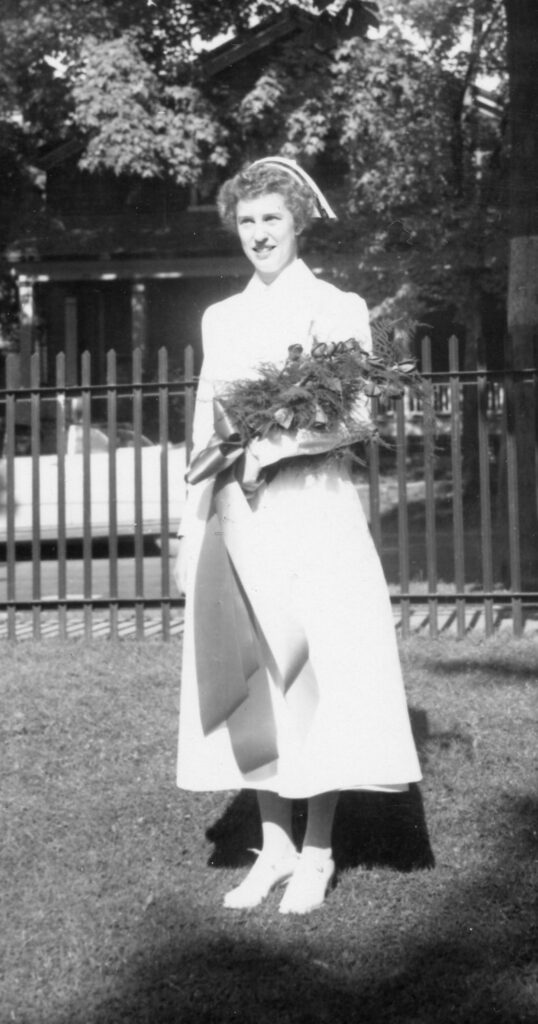
Finding this kind of set is a dream come true for me as a collector. While I find the pens themselves interesting, knowing the provenance of this set, and getting to share and honor the career of the nurse who owned it makes it a real treasure for me.
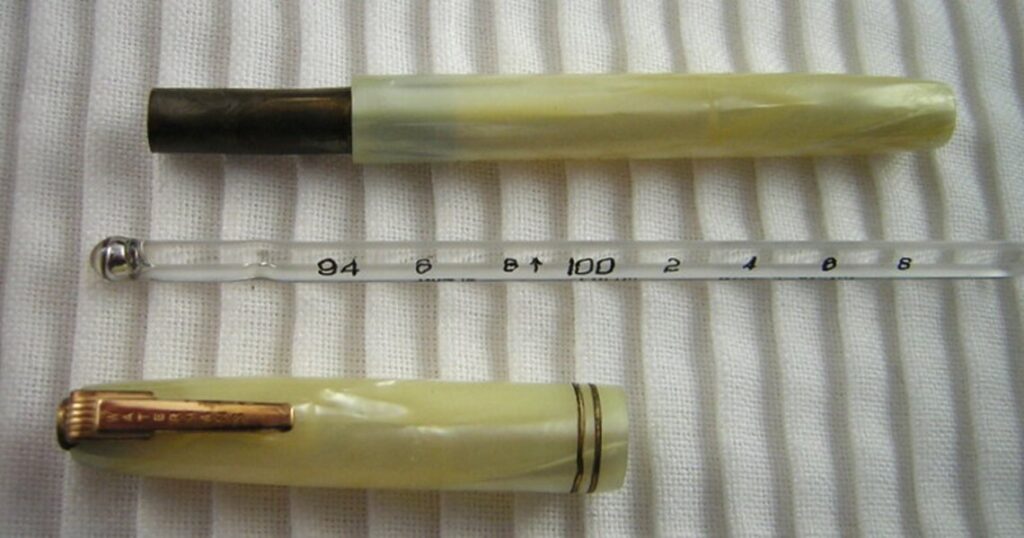
I’d like to thank “Daisy” Patricia Freeman’s family for sharing these photos and this information. And thank you Patricia Freeman, R.N., for your service to humanity. God bless the nurses!

